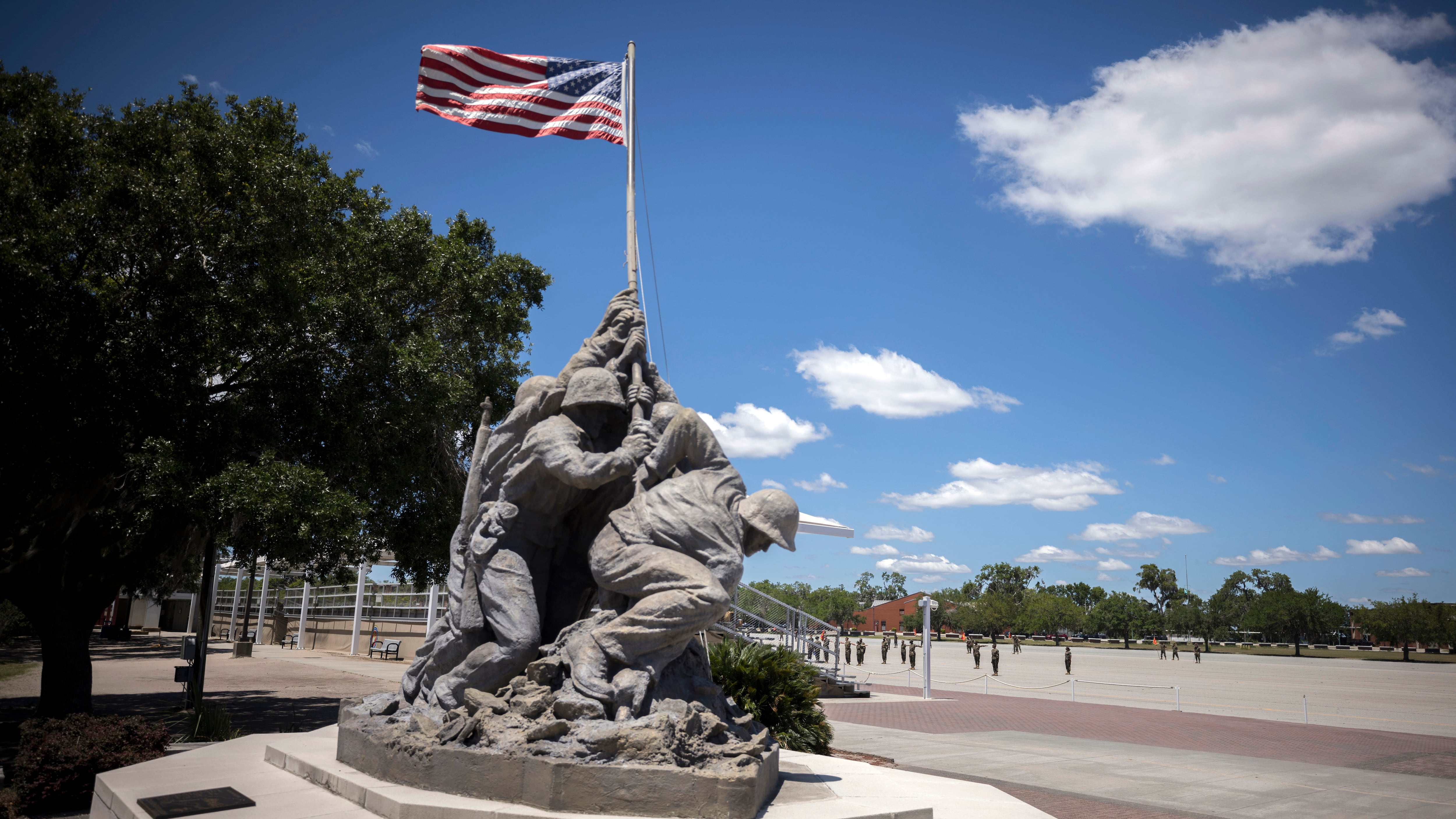As the Marine Corps undergoes a sweeping modernization of how it conducts combat, it’s also planning big changes for its 25 installations worldwide.
The changes — which include improving barracks, rethinking where the service positions itself, and protecting bases from adversaries and climate change alike — are laid out in the Installations and Logistics 2030 report, released Thursday.
Installations and Logistics 2030 accompanies the Corps’ three other recent strategy documents. Force Design 2030, released in 2020, lays out warfighting concepts, while Training and Education 2030 and Talent Management 2030 discuss how to retain and train Marines who can put those new concepts into action.
RELATED

Force Design 2030 and its subsequent annual updates say that the Corps has to be more dispersed and agile if it wants to be ready for a modern conflict, especially one against the technologically sophisticated Chinese military.
Much of Installations and Logistics 2030 centers on how to supply and sustain distributed groups of Marines in contested zones. But the document also tasks the Corps with rethinking the ways it uses and cares for its bases.
Improving living conditions on base
By summer, the Marine Corps has to “study and provide recommendations on how to improve barracks management in order to improve quality of life and provide better-maintained living quarters,” per the Installations and Logistics 2030 report.
The report adds that the service must consider both governmental and privatized options, specifically mentioning the Navy’s Pacific Beacon as an example of the latter.
Pacific Beacon is a privatized housing community for E-4 sailors at Naval Base San Diego, boasting a rooftop pool and outdoor fire pits, according to its website.
The Marine Corps knows that its barracks need work.
Sergeant Major of the Marine Corps Troy Black, the top enlisted Marine, traveled to Camp Pendleton, California, on Feb. 7 and Feb. 8 and expressed displeasure about what he saw in 1st Marine Division’s barracks.
“Some of the things I saw today in these barracks were the same things I saw in the same barracks from 2004 to 2007,” Black said, as quoted in a Marine Corps news release. “We must do better. We must provide relentless attention, care and resources to our Marines so they can focus on the mission — not the state of their living conditions.”
The report says the Corps needs to examine how quality of life on base, including not only barracks but also other kinds of housing and health care, affects retention — itself a main goal of Talent Management 2030.
Bolstering base resilience
The Marine Corps wants to make its bases more resilient in facing a variety of threats, including, physical attacks, cyber attacks and climate change.
It will start looking into whether it can use 3D printing to rebuild base infrastructure after it sustains damage, whether from a drone strike or a hurricane.
By September, the Marine Corps must assess the resilience of all its installations and craft recovery plans for them, the report says.
“We are expanding alternative energy options aboard our bases including solar and biomass turbines,” stated Lt. Gen. Edward Banta, deputy commandant for installations and logistics, in prepared remarks Thursday. “We are also exploring defensive capabilities to counter unmanned aerial systems.”
The report didn’t single out any bases as being particularly vulnerable to climate change. But Marine Recruit Depot Parris Island, on the coast of South Carolina, already faces flooding in some areas about 10 times a year, and some scientists say flood-prone areas of the base could be underwater for almost 30% of the year by 2050.
The South Carolina base has taken some steps to mitigate the effects of climate change, including by working with conservationists to build oyster-shell reefs to protect the shoreline by the base.
The Marine Corps has considered shuttering the historic South Carolina base in large part because of the extreme storms that batter the base, Military.com reported in 2022.
Rethinking locations
The report calls for the Marine Corps to begin a “top-down review of where capabilities are positioned and services are provided across the globe.”
Some capabilities — including people, equipment and supplies — may be too vulnerable where they are now and will have to be repositioned, according to the report.
The Corps is evaluating a variety of risks that installations face, not just vulnerability to attack by an adversary, Col. Aaron Angell, executive assistant for installations and logistics, told reporters Thursday.
“There’s also the vulnerabilities even with being close to the sea, and the equipment storage, and some of the challenges with corrosion, and then even the challenges of supporting families in austere different locations,” he said.
Some capabilities, meanwhile, may relocate closer to an adversary “to metaphorically move the factory to the frontline,” as the report puts it.
The Marine Corps already is adjusting where it positions its Marines. In January, it officially reactivated Camp Blaz, Guam.
The Corps will gradually move approximately 5,000 of the more than 18,000 Marines now on Okinawa, Japan, to the base, as a 2012 U.S.-Japanese agreement dictated.
By May, the Marine Corps will release a more specific plan for how it will allocate resources on installations, with more details on construction and modernization.
Irene Loewenson is a staff reporter for Marine Corps Times. She joined Military Times as an editorial fellow in August 2022. She is a graduate of Williams College, where she was the editor-in-chief of the student newspaper.









